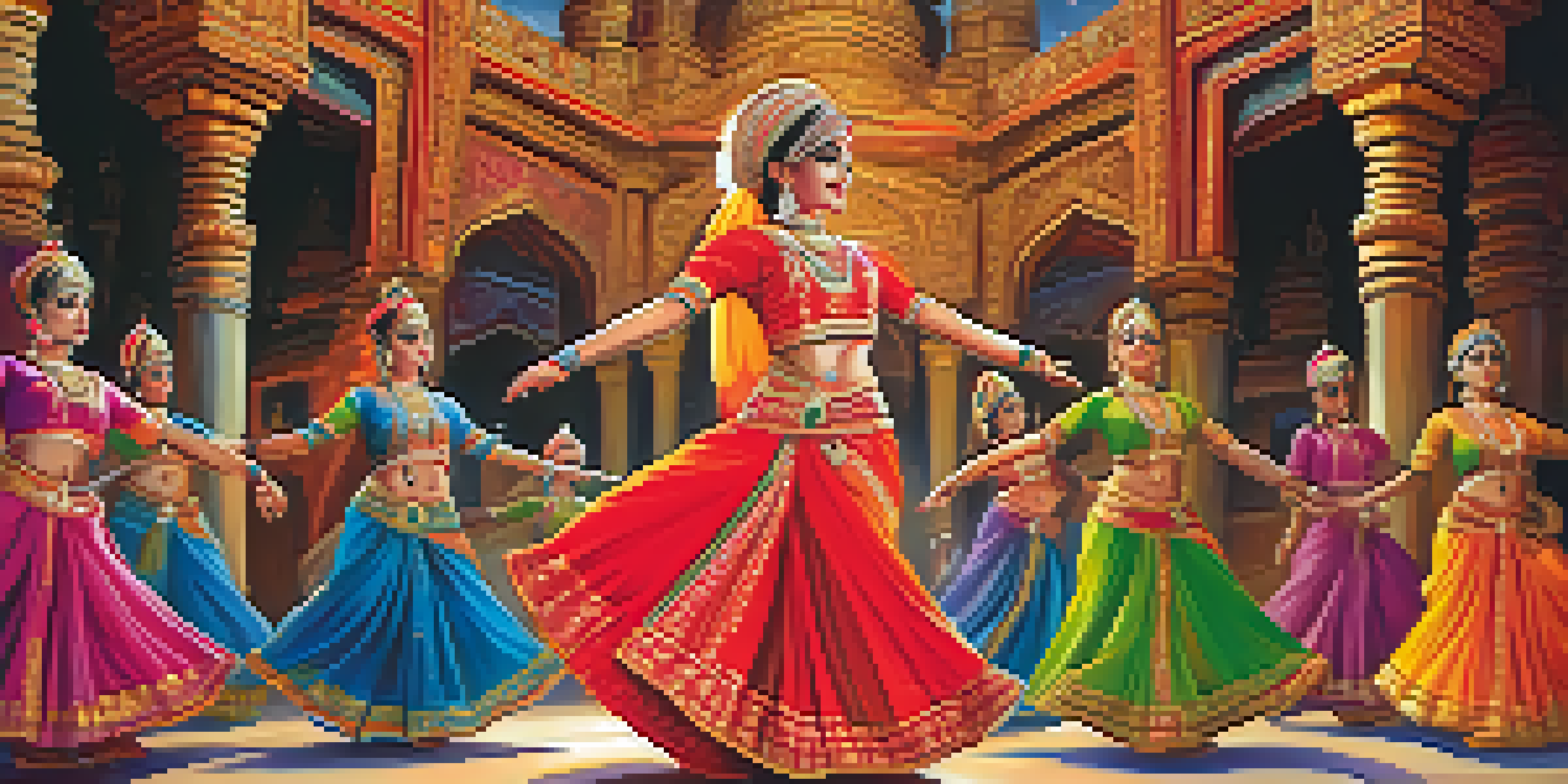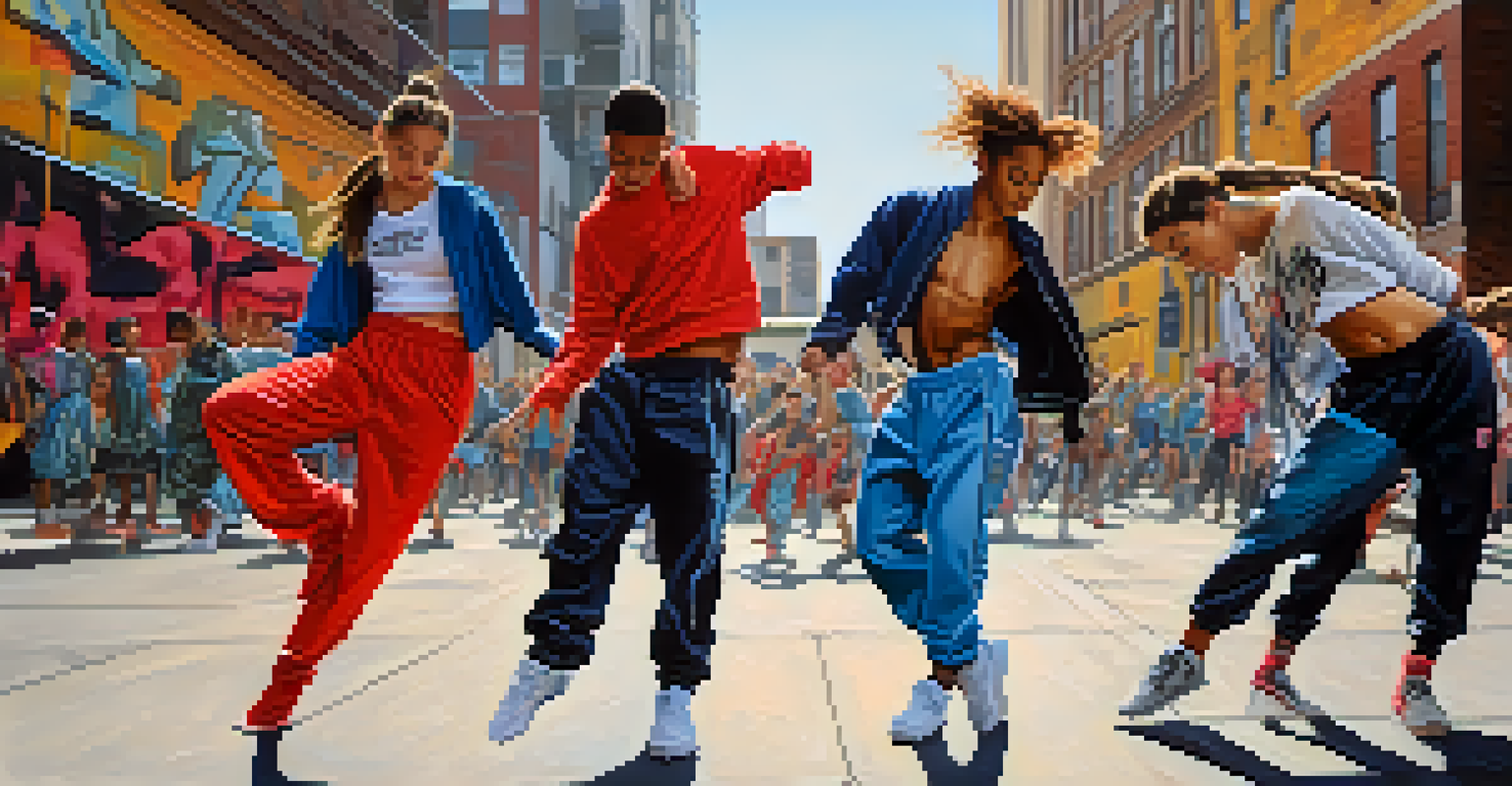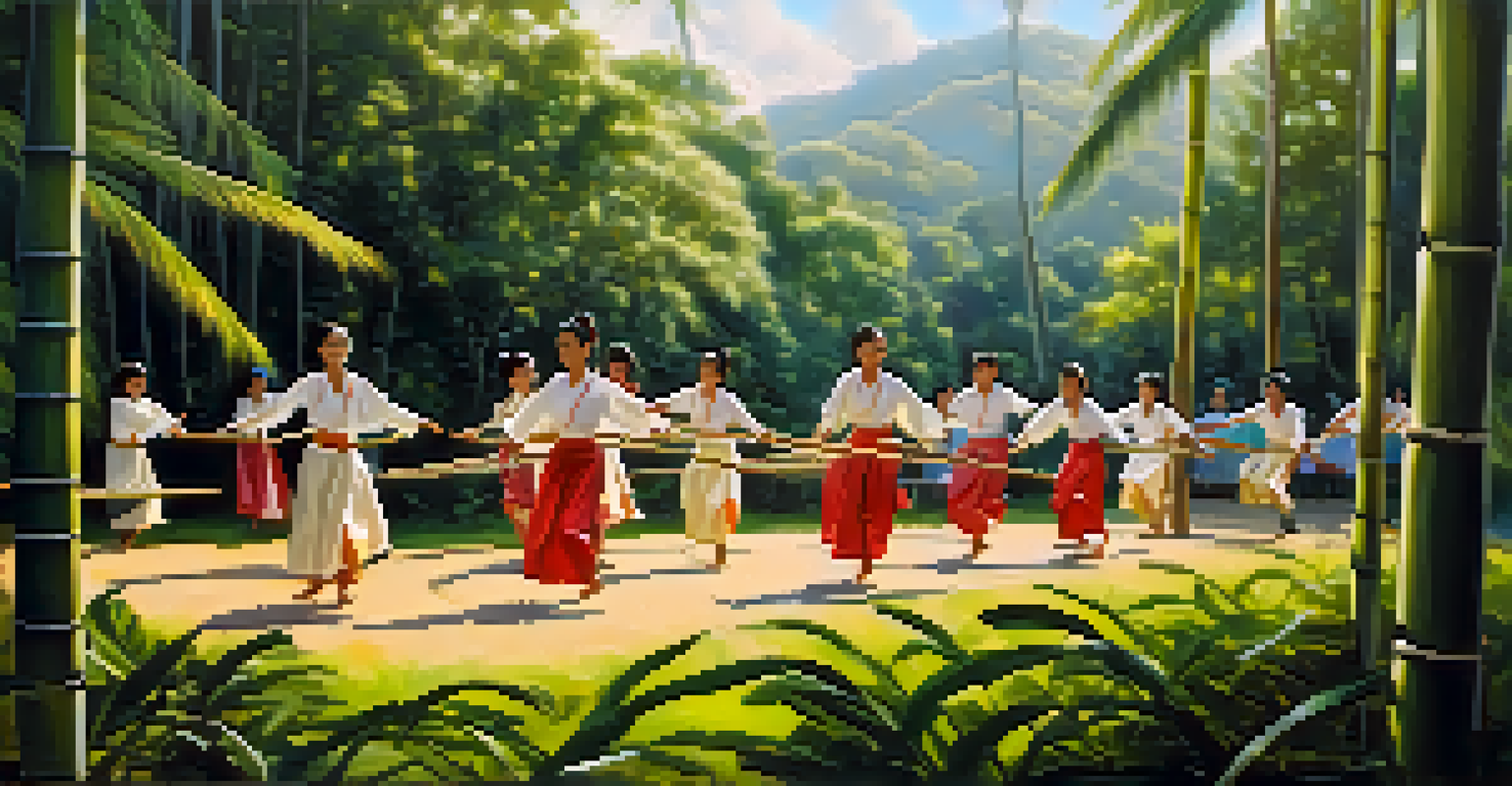The Connection Between Dance and Identity in Asian Cultures

The Role of Dance in Asian Cultural Traditions
In many Asian cultures, dance serves as a vital form of expression, deeply woven into the fabric of societal traditions. It often reflects the values, beliefs, and histories of various communities, making it a living archive of cultural identity. For instance, traditional Indian dance forms like Bharatanatyam not only entertain but also narrate stories from mythology, embodying the divine and cultural ethos.
Dance is the hidden language of the soul.
These dance forms are not merely performances; they are rituals that connect generations. As families gather to celebrate festivals, dances become a communal activity that reinforces shared identity and heritage. The act of dancing together fosters a sense of belonging and continuity that is essential in a rapidly changing world.
Moreover, dance can act as a bridge between generations, where elders pass down the nuances of movements and stories to the younger ones. This transmission of knowledge helps preserve cultural identities while allowing them to evolve, demonstrating dance's dynamic nature within Asian cultures.
Dance as a Means of Personal Expression
Beyond cultural heritage, dance also serves as a powerful outlet for personal expression in Asian communities. Many dancers find that through movement, they can articulate emotions and experiences that words may fail to capture. For example, contemporary forms of dance often incorporate traditional elements, allowing artists to reflect their unique journeys while honoring their roots.

In urban settings, this blend of tradition and modernity manifests in vibrant dance scenes, where young people fuse classical techniques with contemporary styles, creating a refreshing dialogue between past and present. This evolution of dance not only showcases individual creativity but also challenges the norms of cultural identity, inviting broader interpretations.
Dance as Cultural Expression
In Asian traditions, dance serves as a vital expression of cultural identity, reflecting values, beliefs, and stories that connect generations.
Consequently, dance becomes a canvas for self-exploration, enabling individuals to navigate their cultural identities amidst globalization. As they embrace diverse influences, dancers contribute to a richer tapestry of cultural expression that reflects their multifaceted identities.
The Influence of Dance on Community Identity
Dance plays a crucial role in shaping community identity, fostering unity and solidarity among its members. In many Asian cultures, communal dances are performed during festivals and celebrations, strengthening social bonds and collective identity. For instance, the traditional lion dance in Chinese culture not only entertains but also symbolizes good fortune and community strength.
The dance is a poem of which each movement is a word.
These shared experiences create a sense of belonging, as participants engage in movements that have been passed down through generations. The rhythm and synchronization of group dances mirror the interconnectedness of individuals within the community, reinforcing their collective identity.
Furthermore, dance can serve as a platform for social change, addressing contemporary issues and uniting communities around common causes. By using dance as a medium for activism, Asian communities can express their cultural pride while advocating for social justice, illustrating how deeply intertwined dance and identity can be.
Preserving Cultural Identity Through Dance
In an age of globalization, preserving cultural identity has become increasingly important, and dance plays a pivotal role in this endeavor. Many Asian communities utilize dance to maintain their cultural heritage while adapting to modern influences. This preservation effort is evident in dance schools and cultural festivals that celebrate traditional practices.
For instance, the revival of folk dances, such as the Filipino Tinikling, serves not only to keep traditions alive but also to educate younger generations about their cultural roots. These dance forms become a source of pride and identity, allowing individuals to connect with their heritage in meaningful ways.
Modernization's Impact on Dance
The fusion of traditional and contemporary dance forms illustrates the challenges and innovations faced by dancers in preserving cultural heritage.
Moreover, through international performances and collaborations, these traditional dances gain visibility, fostering cross-cultural appreciation. By sharing their unique dance styles with global audiences, Asian communities assert their identities while inviting others to engage with their rich cultural narratives.
The Impact of Modernization on Traditional Dance
As societies evolve, traditional dance forms face the challenge of modernization, prompting a reevaluation of their roles within cultural identity. Many dancers find themselves at a crossroads, where they must balance the preservation of their cultural heritage with the allure of contemporary styles. This dynamic often leads to innovative fusions that breathe new life into traditional forms.
For instance, the integration of hip-hop into traditional Asian dance has created a platform for dialogue between generations, allowing younger dancers to express their identities in ways that resonate with their experiences. However, this blending also raises questions about authenticity and cultural appropriation, challenging dancers to navigate these complex dynamics thoughtfully.
Ultimately, the impact of modernization on dance reflects broader societal changes, prompting communities to redefine what cultural identity means in a globalized world. Through this ongoing dialogue, dance remains a vital expression of identity, continuously shaped by both tradition and innovation.
Dance as a Reflection of Societal Changes
Dance often acts as a mirror, reflecting the societal changes occurring within Asian cultures. As communities experience shifts in social norms, economic conditions, and political climates, their dance forms evolve accordingly. For example, dances that once celebrated traditional values may adapt to address contemporary issues such as gender equality and environmental awareness.
This adaptability allows dance to remain relevant, providing a platform for artists to comment on the world around them. In recent years, many dancers have begun to use their art to challenge stereotypes and advocate for social change, demonstrating the power of dance as a transformative medium.
Globalization and Cultural Identity
The globalization of Asian dance presents opportunities for cultural sharing while also raising concerns about authenticity and cultural appropriation.
Through performances that tackle pressing issues, dancers contribute to a broader cultural conversation, using their movements to inspire reflection and provoke thought within their communities. In this way, dance not only preserves cultural identity but also actively shapes it in response to the changing world.
The Globalization of Asian Dance Forms
In today's interconnected world, the globalization of Asian dance forms presents both opportunities and challenges for cultural identity. Traditional dances are being showcased on international stages, gaining recognition and appreciation from diverse audiences. This exposure can empower Asian communities, allowing them to share their heritage while fostering cross-cultural understanding.
However, the globalization of dance also raises concerns about cultural dilution and appropriation. As elements of traditional dance are borrowed and reinterpreted, maintaining authenticity becomes a delicate balancing act. Dancers and choreographers must navigate these complexities, ensuring that their cultural narratives are respectfully represented.

Ultimately, the globalization of dance serves as a reminder of the fluid nature of cultural identity. While sharing their art with the world, Asian communities can embrace diversity and foster connections, enriching both their own identities and those of others in the process.